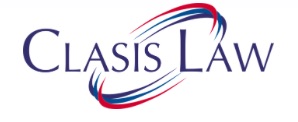22 October, 2019
The Hon'ble Supreme Court of India in its recent judgment dated September 18, 2019 in the matter titled as Gaurav Hargovindbhai Dave vs Asset Reconstruction Company (India) Ltd. & Anr. [Civil Appeal No.4952 of 2019] has held that an application under section 7 of Insolvency and Bankruptcy Code, 2016 (“Code”) would fall only within the residuary Article 137 of the Limitation Act.
The brief facts of the case are that Shivam Water Treaters Private Limited (Respondent No.2/ Corporate Debtor) was declared Non-Performing Asset on July 21, 2011. Asset Reconstruction Company (India) Ltd. (“Respondent No.1) on the basis of an assignment dated March 23, 2014 in its favor, had filed an application under section 7 of the Code, against Respondent No.2, before the Adjudicating Authority, National Company Law Tribunal, Mumbai Bench (“NCLT”). In Column II of Form-I (mentioned as date of default) annexed to the application, the Respondent No.1 has stated the date of Non-Performing Asset as July 21, 2011.
The NCLT applied Article 62 of the Limitation Act and concluded the limitation period to be of 12 years from the date on which the money suit had become due and therefore, considering the application as within the limitation period, admitted the same under section 7 of the Code.
Aggrieved by the order of the NCLT, the Appellant (Shareholder) preferred an appeal before the National Company Law Appellate Tribunal (“NCLAT”). Before the NCLAT, one of the arguments of the Appellant was that the application under section 7 of the Code was not maintainable as the claim was barred by limitation and consequently there was no debt in the eyes of the law.
The NCLAT vide its judgment dated May 2, 2019, dismissed the appeal of the Respondent No.2, holding that the claim of the Respondent No.1 was not barred by limitation. The NCLAT relied on its earlier judgments and held that the time would begin to run for the purposes of limitation only on and from December 1, 2016, which was the date of enactment of the Code. It also considered
the fact that the Respondent No.2 had offered three settlement proposals dated February 24, 2015, April 29, 2015 and June 26, 2015 in concluding that the claim was not time barred.
Against the impugned judgment of the NCLAT, the Appellant preferred an appeal before the Hon'ble Supreme Court. One of the arguments of the Appellant before the Hon'ble Supreme Court was that
“Article 137 of Limitation Act being a residuary article would apply to the facts of this case, and as right to sue accrued only on and from July 21, 2011, three years having already elapsed since then in 2014, the Section 7 application filed in 2017 is clearly out of time.”
The Hon'ble Supreme Court after considering the facts and law held that “Article 62 is out of the way on the ground that it would only apply to suits”. It further observed that an application under section 7 of the Code being “an application” would fall within the residuary Article 137 of the Limitation Act. The Hon'ble Supreme Court held that in the present case, in view of the provisions of Article 137 of the Limitation Act, time began to run from July 21, 2011 and as a result of which the application filed under section 7 was clearly be time- barred.
The Hon'ble Supreme Court, while allowing the appeal, also observed that the intention of enacting the Code could never have been to give new life to debts which are otherwise time barred.
For further information, please contact:
Vineet Aneja, Partner, Clasis Law
vineet.aneja@clasislaw.com





